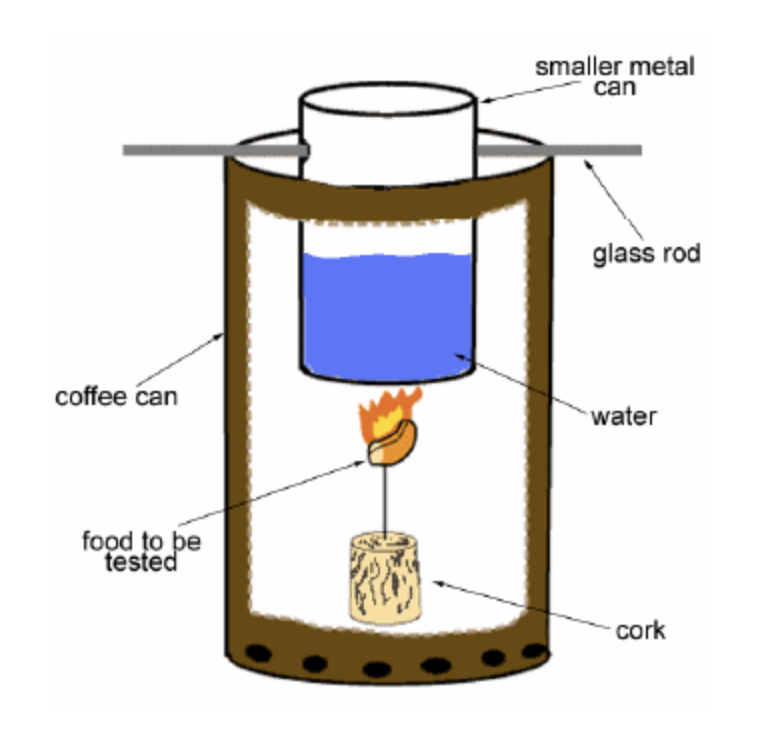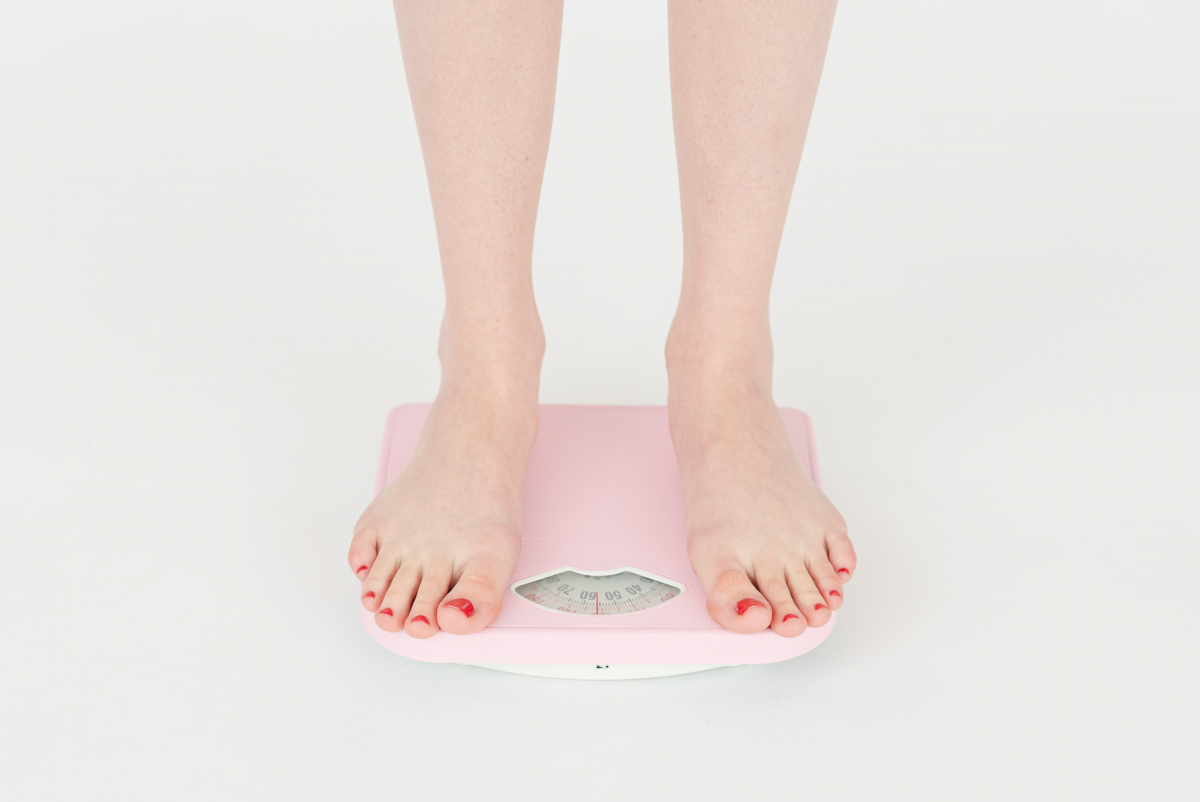Today's article is a follow-up to my previous piece on "Measuring Your Waist Circumference" where I will delve into the science of fat loss. Given the known health risks associated with a high BMI and visceral fat level, we must discuss this topic to get a basic understanding of how and why fat loss occurs.
A Table of Contents is provided below for you to jump directly to each section of the article, but it's recommended that you read this from start to end.
Table of Contents
- Introduction
- TLDR; Key Takeaways
- Thermodynamics and human metabolism
- What is Thermodynamics?
- The First Law of Thermodynamics
- Is a Calorie actually a Calorie?
- The Role of Exercise in Fat Loss
Introduction
This article will empower you with the knowledge and understanding of why fat loss occurs.
Most just want the "how to" and not the “why”, but if you've read the About section on my website, my goal is for you to eventually take charge of your health and fitness without my assistance, and if I can help you achieve that with my writing, then I’d consider that an achievement.
As a popular quote reads:
"If you give a man a fish, you feed him for a day. If you teach a man to fish, you feed him for a lifetime"
Lao Tzu
If you've not read my previous articles, you can do so here.
Although it's not a prerequisite for understanding today's topic, it's still useful knowledge if you want to learn more about health, pain, and injuries.
Notice I used the term fat loss instead of weight loss, this is because we want to lose the right weight — Fat and NOT muscle. Furthermore, the number you see on your weighing scale doesn't tell you exactly which proportion of each you're losing during a fat loss phase.
Hence in my previous article, I suggested the use of other methods of measuring body composition to complement your waist circumference measurement.
If you've not read it, don't worry. I got you covered. In essence, we want to take:
- Bi-Weekly or monthly progress photos (sides, back, and front)
- A weekly average of our daily scale weight taken first thing in the morning
- Bi-weekly or Monthly Skin-fold measurements using a skin-fold caliper.
Together, these measures will help you get a better view of your fat loss progress.
With that covered, let’s get right to the fundamental concept of fat loss which will help you build a strong foundation for understanding the next article. Although this topic can get complicated, rest assured it'll be edited for maximum readability and clarity.
Disclaimer: I'm not a clinical dietitian nor a food scientist, and most of today's writing is based on anecdotes (i.e. my own fat loss experience and my experience helping people lose fat), and my current knowledge/interpretation of the data on the topic. Use this as a resource in addition to others when navigating your fat loss journey. Information is accurate as of 25 June 2023 and will be updated if necessary.
TLDR; Key Takeaways
- Our body works by taking in energy, in the form of food, and expanding them as heat loss and work done during daily activities and tasks, if energy going out is more than energy coming in, weight loss occurs.
- Despite long-standing debates amongst researchers, the key conclusion is that a calorie is a calorie regardless of macronutrient composition, meaning 50 calories from dietary fat and 50 calories from carbohydrates have the same effect on weight gain/loss. However, they exert different effects on bodily and hormonal functions.
- A diet high in refined carbohydrates has been shown to perpetuate insulin resistance and subsequent development of Type-2 Diabetes and other related conditions.
- Exercise plays an irreplaceable role in any successful fat-loss plan, it stimulates important processes within the body that increases its metabolic rate, thus burning more calories post-exercise, and at rest.
Thermodynamics and Human Metabolism
What is Thermodynamics?
Thermodynamics is a branch of physics that studies how energy changes in a system, particularly heat, and how it corresponds to mechanical work. To quote the Encyclopedia of Brittanica:
Thermodynamics is the study of the relations between heat, work, temperature, and energy.
The laws of thermodynamics describe how the energy in a system changes and whether the system can perform useful work on its surroundings
Gordon W.F. Drake
You may be wondering how this relates to fat loss, but upon closer examination, we can see that as human beings, we operate much like a closed system.
Our bodies depend on energy, which is obtained from food in the form of calories, to fuel our daily tasks and activities. As a result, the energy we consume is expended in the process.
*Did you know that a calorie or kcal (a unit of energy) was determined by burning food in a calorimeter? (pictured below)

The First Law of Thermodynamics
The first law of thermodynamics is also known as the law of conservation of energy, where the change in internal energy (ΔU), is equal to the difference between the heat added to the system (Q), and the work done by the system (W) (see Fig.1).

"In a closed system, in thermal equilibrium, energy can neither be created nor destroyed; it shall be conserved"
The First Law of Thermodynamics
Consuming food increases the body's internal energy (ΔU) as the body metabolizes it into potential chemical energy that can be used for various functions within the body.
There are three primary ways in which this internal energy is expended:
- Heat transfer, or heat from the body that gets transferred into the environment (Qout)
- Work done, or daily activities and tasks, such as walking or climbing the stairs (Wout)
- Stored as adipose tissue/body fat (a form of conserved energy)

Internal energy that is lost to heat transfer and work will eventually be replaced by subsequent food intake. In essence, human metabolism uses an oxidation process in which the chemical potential energy of food is released.
You can probably see the direction I'm heading here. If the average internal energy, as defined by ΔU, remains constant, i.e. ΔU=0, then no weight loss will occur.
On the contrary, if ΔU is negative, it means that we expended more energy than energy going in. Thus, the body will mobilize stored energy reserves (body fat) to generate the energy required for carrying out various activities. Likewise, if it's positive, weight gain will happen.
Of course, this is an oversimplification, but it provides a basic understanding of how weight loss (or gain) occurs. Nevertheless, there's a caveat to this, which will be elaborated on in the following sections.
? Like what you're reading so far and find it insightful?
Stay in the loop and never miss a new post by subscribing to my newsletter here.
Is a Calorie Actually a Calorie?
This debate began when a physicist turned nutritional therapist, Andrew Preece, made a comment at the Physics of Food Manufacturing Conference held in January in Chipping Campden, UK. His remark was that although two heads of broccoli and a chocolate bar have the same calorie content, they produce different effects on weight gain. He attributes this to the hypothesis that the human body extracts energy differently from different types of food.
Another researcher, Kevin Hall, who specializes in metabolism and develops mathematical models at the National Institute of Health, provided a counterpoint to this claim. His research in the laboratory demonstrated that when two groups of people consumed diets with equal calorie content but different levels of carbohydrates and dietary fat, they still achieved similar outcomes in terms of body fat and calorie expenditure.
This view was echoed by Dale Schoeller, a researcher specializing in metabolism and nutrition at the University of Wisconsin in Madison, who highlights that the human feeding experiments conducted to determine the calorie content of foods take into account the body's variations in processing different macronutrients (carbs, fats, and protein).
This means that the nutritional information label you see on a stalk of broccoli and a chocolate bar has already accounted for these discrepancies in digesting and metabolizing different macronutrients.
Furthermore, another scientist, Marko Jusup, used the law of thermodynamics in his models to successfully predict the reproduction and growth rate of a bluefish tuna (yes, a fish) as it transforms into an embryo to an adult.
These findings essentially confirm the idea that the first law of thermodynamics governs body weight and energy expenditure (or calories burned by the body). However, it is important to note that both carbohydrates and dietary fat have distinct effects on health.
A diet high in refined carbohydrates increases the risk of visceral fat accumulation (around the internal organs) and promotes the development of fatty liver which, as discussed in my previous article, contributes to the development of obesity-related diseases.
The Role of Exercise in Fat Loss
In this section, we will better understand why traditional exercise in combination with a well-devised caloric-intake strategy is still the most optimal way to lose fat, despite hundreds if not thousands of "secrets" or claims that you can melt fat off eating a certain food, moving a certain way, or performing a certain "fat-burning" exercise.
Generally speaking, there are two categories of exercise training.
- Anaerobic Exercise (i.e. resistance training)
- Aerobic Exercise (i.e. jogging)
Within each category, there are various modes/intensities available. For example, you could get on the stationary bike (mode), and perform it at high intensity, using intervals (intensity). This goes beyond the scope of today's article, which will be discussed in future articles.
Now, why is exercise so important for any successful fat-loss strategy?
Here's why:
After you exercise, your body continues to burn energy even after you're done, also known as excess post-exercise oxygen consumption (EPOC). The more intense your workout, the higher the EPOC. For example, high-intensity interval and resistance training result in a longer-lasting EPOC than lower-intensity exercises.
During the EPOC period, your body continues to burn fat at an increased rate. This helps with weight loss and fat reduction. Even though high-intensity exercises may use less fat during the actual workout, the body makes up for it by burning more fat afterward.
When comparing light exercise to heavy exercise, there are several factors that contribute to prolonged calorie burn after intense workouts. These factors include:
- Muscle recovery,
- Metabolism of lactic acid,
- Temperature regulation, heart rate, breathing, and hormone balance.
People who are trained and exercise regularly have an advantage when it comes to burning fat. Their muscles become more efficient at using fatty acids for energy. This means they can burn more fat during exercise, even at the same intensity level as someone untrained.
It's not just about the fat released from fat cells; it's about how well the muscles can use that fat for fuel. Trained muscles are better at both getting access to the fatty acids and burning them off.
In addition to this, exercise increases the number of capillaries within the blood vessels, and since fatty acids travel to the muscle via these small vessels, this leads to a higher amount of fatty acid delivery.
These are just some of the many training adaptations that occur from exercise training.
In the next article, we will go into the tactics of fat loss while setting our lifestyle, diet, and training up for success. In my opinion, fat loss is not just about losing fat, but keeping it off for good.
Stay tuned!
Hope you learned something from this piece! You can help me by:
1) Sharing this article with friends and family, if you think it'll help them. Links to share this article on social media channels can be found below
2) If you feel that my content is inaccurate, misleading, or outdated. Please leave a comment below the article in question.

Marcus Oon
Marcus is a practicing physiotherapist and strength & conditioning specialist located in Singapore. He completed his Undergraduate (Hons) degree at the Singapore Institute Of Technology - Trinity College Dublin, and his Strength & Conditioning certification at the National Strength & Conditioning Association (NSCA). He is also active in the NSCA's Health and Wellness, Powerlifting, and Sports Medicine/Rehabilitation Special Interest Groups.
Found this article informative?


